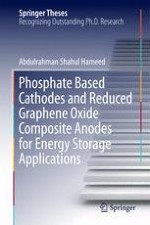2016 | Buch
Über dieses Buch
This thesis outlines the investigation of various electrode materials for Li-ion battery (LIB) applications. Li-ion batteries are widely used in various portable electronic devices owing to their compactness, light weight, longer life, design flexibility and environment friendliness.
This work describes the detailed synthesis and structural studies of various novel phosphate based cathode materials and reduced graphene oxide (rGO) composites as anode materials. Their electrochemical characterization as electrode for LIBs has been investigated in detail. The thesis also includes a comprehensive introduction for non-specialists in this field. The research could benefit and will appeal to scientists, especially new researchers working in the field of energy storage.
Anzeige
